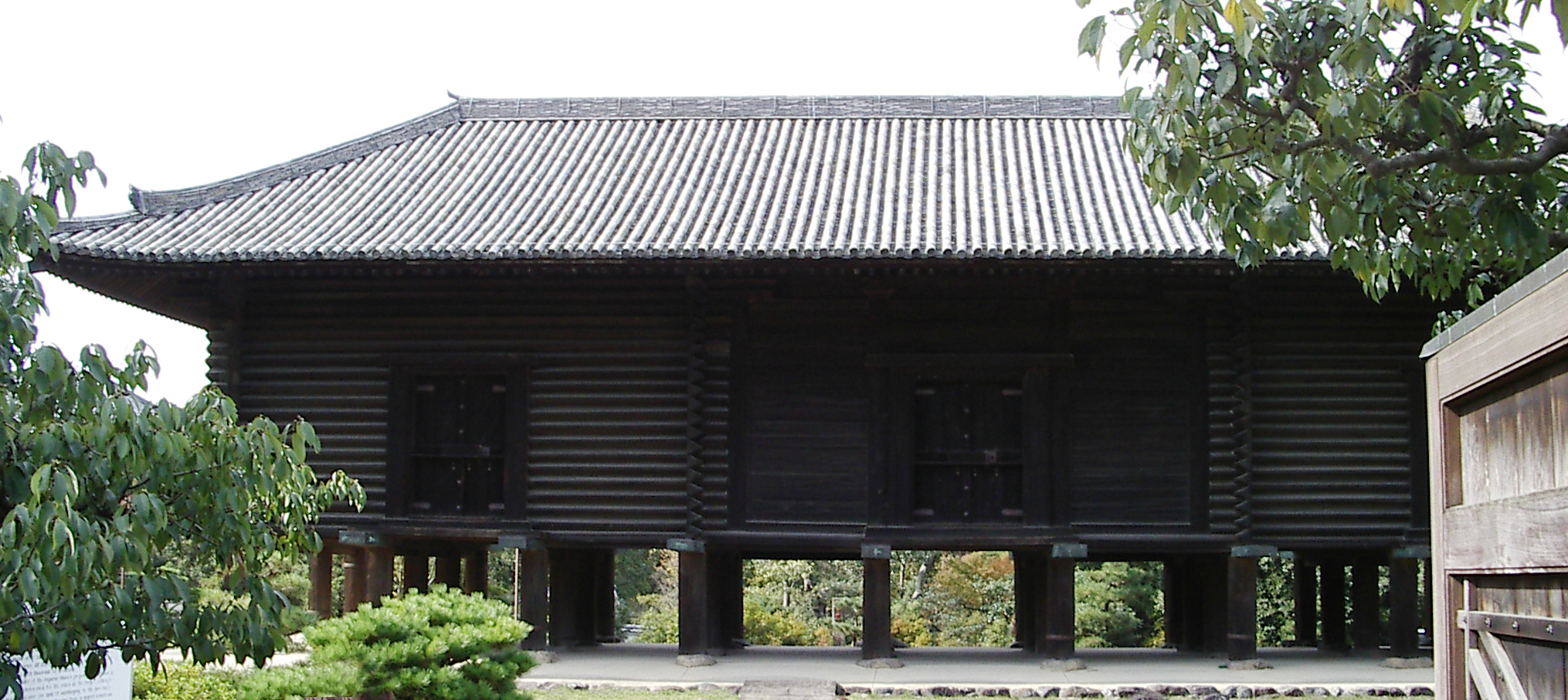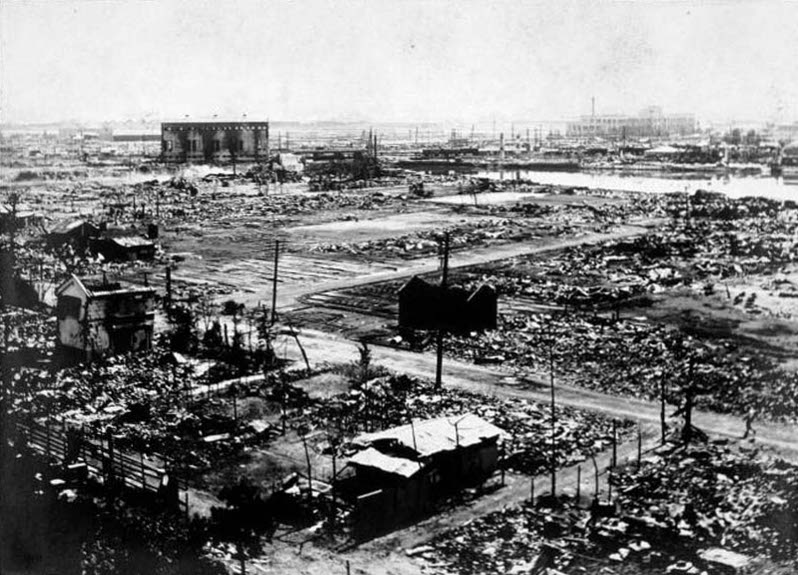|
Museums In Japan
Japan was introduced to the idea of Western-style museums ( hakubutsukan 博物館) as early as the Bakumatsu (幕末 ) period through Dutch studies. History Before WWII Upon the conclusion of the US-Japan Amity Treaty in 1858, a Japanese delegation to America observed Western-style museums first-hand. Following the Meiji Restoration, botanist Keisuke Ito, and natural historian, Tanaka Yoshio, also wrote of the necessity of establishing museum facilities similar to the ones found in the West. Preparations commenced to construct facilities to preserve historical relics of the past. In 1872, the Museum of the Ministry of Education ( Monbusho Hakubutsukan 文部省博物館) staged Japan's first exhibition in the Yushima area of Tokyo. Minerals, fossils, animals, plants, regional crafts, and artifacts were among the articles displayed. Following the Yushima exposition, the government set up a bureau charged with the construction of a permanent museum. The bureau proposed tha ... [...More Info...] [...Related Items...] OR: [Wikipedia] [Google] [Baidu] |
Japan
Japan is an island country in East Asia. Located in the Pacific Ocean off the northeast coast of the Asia, Asian mainland, it is bordered on the west by the Sea of Japan and extends from the Sea of Okhotsk in the north to the East China Sea in the south. The Japanese archipelago consists of four major islands—Hokkaido, Honshu, Shikoku, and Kyushu—and List of islands of Japan, thousands of smaller islands, covering . Japan has a population of over 123 million as of 2025, making it the List of countries and dependencies by population, eleventh-most populous country. The capital of Japan and List of cities in Japan, its largest city is Tokyo; the Greater Tokyo Area is the List of largest cities, largest metropolitan area in the world, with more than 37 million inhabitants as of 2024. Japan is divided into 47 Prefectures of Japan, administrative prefectures and List of regions of Japan, eight traditional regions. About three-quarters of Geography of Japan, the countr ... [...More Info...] [...Related Items...] OR: [Wikipedia] [Google] [Baidu] |
National Science Museum Of Japan
The is in the northeast corner of Ueno Park in Tokyo. The museum has exhibitions on pre- Meiji science in Japan. It is the venue of the taxidermied bodies of the legendary dogs Hachikō and Taro and Jiro. A life-size blue whale model and a steam locomotive are also on display outside. History Blue whale Life size model. Opened in 1877, it has had several names, including Ministry of Education Museum, Tokyo Museum, Tokyo Science Museum, the National Science Museum of Japan, and the National Museum of Nature and Science as of 2007. It was renovated in the 1990s and 2000s, and offers a wide variety of natural history exhibitions and interactive scientific experiences. It was completed as the main building of the Tokyo Science Museum in September 1931 as part of the reconstruction project after the Great Kanto Earthquake in Neo-Renaissance style. Designed by Kenzo Akitani, an engineer of the Ministry of Education, Culture, Sports, Science and Technology, Building Division. ... [...More Info...] [...Related Items...] OR: [Wikipedia] [Google] [Baidu] |
Electric Energy Museum
Electricity is the set of physical phenomena associated with the presence and motion of matter possessing an electric charge. Electricity is related to magnetism, both being part of the phenomenon of electromagnetism, as described by Maxwell's equations. Common phenomena are related to electricity, including lightning, static electricity, electric heating, electric discharges and many others. The presence of either a positive or negative electric charge produces an electric field. The motion of electric charges is an electric current and produces a magnetic field. In most applications, Coulomb's law determines the force acting on an electric charge. Electric potential is the work done to move an electric charge from one point to another within an electric field, typically measured in volts. Electricity plays a central role in many modern technologies, serving in electric power where electric current is used to energise equipment, and in electronics dealing with electrical c ... [...More Info...] [...Related Items...] OR: [Wikipedia] [Google] [Baidu] |
Idemitsu Art Gallery
is a Japanese petroleum company. It owns and operates oil platforms, refineries, produces and sells petroleum, oils and petrochemical products, and also operates gas stations under the brand and until 2023, in its own ''Idemitsu'' and ''Shell'' brands; the Shell brand being used under the license of Shell. Idemitsu is the second largest petroleum refiner in Japan, after Eneos. It was ranked as the 262nd largest company in the world by revenue in Fortune Global 500 (2008). It is number 26 in petroleum refining. Idemitsu Kosan is listed in the First Section of the Tokyo Stock Exchange and, since absorbing Showa Shell Sekiyu in 2019, is a constituent of the Nikkei 225 index; however, it is not a constituent of the TOPIX 100 index (instead, it is a constituent of the TOPIX Mid400 index). History Early 20th century Sazō Idemitsu founded in 1911, selling lubricant oil for Nippon Oil in Moji, northern Kyushu. He expanded to selling fuel oil for fishing boats in Shimonoseki.''In ... [...More Info...] [...Related Items...] OR: [Wikipedia] [Google] [Baidu] |
Nara Period
The of the history of Japan covers the years from 710 to 794. Empress Genmei established the capital of Heijō-kyō (present-day Nara). Except for a five-year period (740–745), when the capital was briefly moved again, it remained the capital of Japanese civilization until Emperor Kanmu established a new capital, Nagaoka-kyō, in 784, before moving to Heian-kyō, modern Kyoto, a decade later in 794. Japanese society during this period was predominantly agricultural and centered on village life. Most of the villagers followed Shintō, a religion based on the worship of natural and ancestral spirits named ''kami.'' The capital at Nara was modeled after Chang'an, the capital city of the Tang dynasty. In many other ways, the Japanese upper classes patterned themselves after the Chinese, including adopting the Chinese writing system, Chinese fashion, and a Chinese version of Buddhism. Literature Concentrated efforts by the imperial court to record its history produced the f ... [...More Info...] [...Related Items...] OR: [Wikipedia] [Google] [Baidu] |
Shōsōin
The is the wikt:treasure house, treasure house of Tōdai-ji Temple in Nara, Nara, Nara, Japan. The building is in the ''azekura'' (log-cabin) style with a raised floor. It lies to the northwest of the Great Buddha Hall. The Shōsō-in houses artifacts connected to Emperor Shōmu (聖武天皇)(701–756) and Empress Kōmyō (光明皇后)(701–760), as well as arts and crafts of the Tenpyō, Tempyō (天平) era of History of Japan, Japanese history. History The construction of the Tōdai-ji Buddhist temple complex was ordained by Emperor Shōmu as part of a national project of Buddhist temple construction. During the Tenpyō, Tempyō period, the years during which Emperor Shōmu reigned, multiple disasters struck Japan as well as political uproar and epidemics. Because of these reasons Emperor Shōmu launched a project of provincial temples. The Tōdai-ji was appointed as the head temple of these provincial temples. Emperor Shōmu was a strong supporter of Buddhism and he tho ... [...More Info...] [...Related Items...] OR: [Wikipedia] [Google] [Baidu] |
1923 Great Kantō Earthquake
The 1923 Great Kantō earthquake (, or ) was a major earthquake that struck the Kantō Plain on the main Japanese island of Honshu at 11:58:32 JST (02:58:32 UTC) on Saturday, 1 September 1923. It had an approximate magnitude of 8.0 on the moment magnitude scale (Mw), with its epicenter located southwest of the capital Tokyo. The earthquake devastated Tokyo, the port city of Yokohama, and surrounding prefectures of Kanagawa, Chiba, and Shizuoka, and caused widespread damage throughout the Kantō region. Fires, exacerbated by strong winds from a nearby typhoon, spread rapidly through the densely populated urban areas, accounting for the majority of the devastation and casualties. The death toll is estimated to have been between 105,000 and 142,000 people, including tens of thousands who went missing and were presumed dead. Over half of Tokyo and nearly all of Yokohama were destroyed, leaving approximately 2.5 million people homeless. The disaster triggered widespread social ... [...More Info...] [...Related Items...] OR: [Wikipedia] [Google] [Baidu] |
Ohara Museum Of Art
The in Kurashiki was the first collection of Western art to be permanently exhibited in Japan. The museum opened in 1930 and originally consisted almost entirely of French paintings and sculptures of the 19th and 20th centuries. The collection has now expanded to include paintings of the Italian Renaissance and of the Dutch and Flemish 17th century. Well-known American and Italian artists of the 20th century are also included in the collection. The basis of the collection was formed by Ōhara Magosaburō on the advice of the Japanese painter Kojima Torajirō (1881–1929) and the French artist Edmond Aman-Jean (1860–1935). In 1961 a wing was added for acquired Japanese paintings of the first half of the 20th century: Fujishima Takeji, Aoki Shigeru, Kishida Ryūsei, Koide Tarushige and others. In the same year, a wing for potteries of Kawai Kanjirō, Bernard Leach, Hamada Shōji, Tomimoto Kenkichi and others was opened. 1963 a wing was added for the woodcuts of Munakat ... [...More Info...] [...Related Items...] OR: [Wikipedia] [Google] [Baidu] |
Ōhara Mogasaburo
Ohara or Ōhara may refer to: Places * Ōhara, Chiba * Ōhara, Okayama * Ohara District, Shimane Companies and organisations * Ohara Corporation, a manufacturer of precision optical glass *''Ohara-ryū'', a school of ''ikebana'' * Ohara Museum of Art Other uses * Ohara (surname), two separate Japanese surnames * ''Ohara'' (TV series), U.S. TV series *''Ohara'', from the anime/manga One Piece, an island in the “West Blue” hemisphere which was blown up by the World Government for trying to uncover the true history of the world. Nico Robin , otherwise known as "Devil Child", is a fictional character in the ''One Piece'' franchise created by Eiichiro Oda. The character made her first appearance in the 114th chapter of the series, which was first published in Japan in Shueisha's '' ... hails from this island. See also * O'Hara (other) {{Disambiguation, geo ... [...More Info...] [...Related Items...] OR: [Wikipedia] [Google] [Baidu] |
Okura Shukokan Museum
Okura or Ōkura may refer to: * Okura Hotels, an international chain headquartered in Japan * Ōkura River in New Zealand * Ōkura, New Zealand, a village * Ōkura school of traditional Japanese comic theater * Okura, Yamagata, a village in Japan * the Japanese word for okra * Yamanoue no Okura was a Japanese poet, the best known for his poems of children and commoners. He was a member of Japanese missions to Tang China. He was also a contributor to the Man'yōshū and his writing had a strong Chinese influence. Unlike other Japanese po ..., a Japanese poet {{disambig, geo ... [...More Info...] [...Related Items...] OR: [Wikipedia] [Google] [Baidu] |




